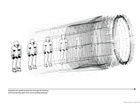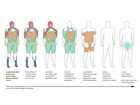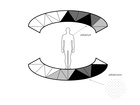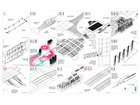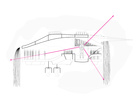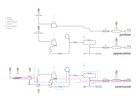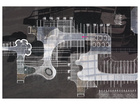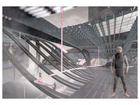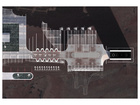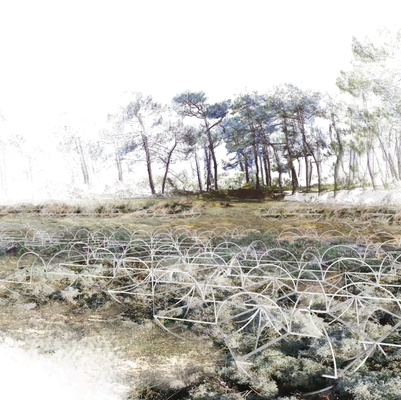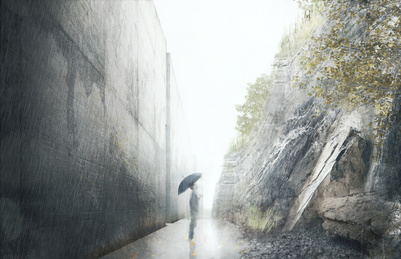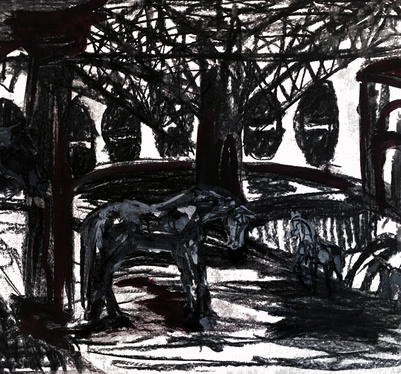PROTECTIVE SKINS

The project speculates about a public bathhouse for a possible / nearby (dystopian) future, developed around the two UN Goals - Climate Action & Good Health and Well-Being.
The proposal is called "protective skins" and it is about a divided (but related) architecture:
a private suit and a public bathhouse - both protecting the human body from different kinds of pollutants (airborne pollution, missing ozone layer, nuclear radiation (wind), acid rain).
The proposal is tested in a counterfactual time line on the Japanese island of Hashima – but represents a general proposal.
The building functions as a cleaning machine: cleaning suit, human body, environment, and itself.
Analytic computational bottom-up methods were developed around the human body (informing suit and architectural program) and transferred and adapted to the scale of the building: blending the skins of protection and making the building conceptually to the body (with its organs, structure, skin, and metabolism).
The proposal wants to question architect’s romanticized image of nature and the idea of protection solely as a binary on/off condition, as a possible way to rethink our architectural boundaries in general.
Additionally, it asks for a critical incorporation of pollution in design – away from pollution as an image and away from seeing pollution as something remote (in terms of time and space).
The architectural boundary of the proposal is shared across a wearable and a building skin – questioning hermetical sealed envelopes of today’s buildings and allowing for a filtering of qualities and (new kinds of) hazards as opposed to blocking them.
Hashima island has the right scale for testing the prototypal building as a filtering device in a polluted environment. Additionally, next to a cultural relevance of a bathhouse, the site has a history of industrial exploitation – one of the main sources of today’s climatic issues.
The proposition is situated in a speculative counterfactual timeline – where the island was never left due to the change from coal to petroleum in Japan.
The human body functions as the starting point for the development of the wearable part of the shared boundary.
Custom-made algorithms were used to extract different parts of the human body: the basis for the developed information-map-method and a first step – through blending methods and concepts – towards a conceptualisation of the building as a metabolistic body.
The data-set is a collection of anatomical images, ct- and mr-scans of a human body. Source: http://web.corral.tacc.utexas.edu/AustinManEMVoxels/AustinMan/index.html
The development of the wearable skin parts inform floor plan (related to the ceremonial undressing) and needed protection of the two skins.
The building is conceptualized as a ceremonial journey through alternating moments of undressing and body cleaning – from a personal experience towards a collective gathering. Additionally, the internal atmosphere changes from polluted / unprotected, cold and dry to clean / protected, humid and hot – due to the increasing filters on the structure (distinguishable in physical, atmospheric and passive).
Methods of positioning, quantifying, and qualifying of filtering layers / devices are shared with the development of the suit discretization.
The positioning of the filtering devices in a synergetic manner makes the building to a cleaning machine / a filtering devices on the possible test site Hashima island: cleaning suit, human body, environment and itself.
Additionally, different short cuts of staff and visitors and the meeting of systems of cleaning and contaminated suit parts gives the building its own metabolism.





During the master studies an interest in the performative and formal qualities of architectural skins were developed; ranging from nature-actuated skins for ceremonial uses in an ayahuasca-ceremony-structure (video), to a cocoon hanging in the forest releasing human smell as a communicator between animals and humans to more physics-related skins as activatable thermal boundaries and finally to a formally- and color-wise- “glitched” skin which was grown around its context. The smaller the architectural space was, the more important became the relationship between the “internal” human and the external environment.











